CAMP BUNDELA, India (Oct. 16, 2009) - From the bottom of a hill, Indian Army Soldiers and U.S. Soldiers charged up to its crest, shooting and working their way together towards a common target at the top. Their positions covered by suppressive fire from two Stryker vehicles.
This uphill range is only one of a spectrum of Indian Army ranges U.S. Army Soldiers had an opportunity to train with during the first mechanized Exercise Yudh Abhyas 09, an annual battalion-level exercise involving the two ground forces. The exercise, running from Oct. 12-27, allows participants to conduct multi-echelon, full-spectrum, combined operations.
This year, the Soldiers of the Indian Army's, 31st Armored Division, 94th Armored Brigade, hosted visiting Soldiers assigned to the U.S. Army's 2nd Squadron, 14th Cavalry Regiment "Strykehorse," 2nd Stryker Brigade Combat Team, 25th Infantry Division, from Schofield Barracks, Hawaii.
"This exercise enables us to gain a relationship with the Indian Army so they can see how our Strykers operate and we can see how they operate as far as their maneuvering of vehicles and their infantry. This way we both gain further respect for each other," said Staff Sgt. Wayne Dively, Range Safety Officer, assigned to Troop C, Strykehorse battalion.
Live-fire training at the ranges enabled partnership and cooperation between the Indian and U.S. Armies.
"At first they show us their methods, then we follow on with ours," said Maj. Paul Armstrong, squadron operations officer. "They do their exercise out on the range, individual small team-size, and then we try to mix and mingle. The final idea is to have an Indian Army Soldier right next to a U.S. Army Soldier, so they're shooting next to each other. Then we'll give each other familiarization of each others weapons systems and let one another try out each others weapons."
Even though the Indian Army Soldiers were in charge of the ranges, U.S. Soldiers helped ensure the safety of all participants.
"These are ranges that the Indian Army uses on a day to day basis, so they demonstrate how they operate the range, and we adapt to that," said Dively. "We still have safeties, which is, guys going out there making sure what we need to do to be safe, so there aren't any accidents, keeping all the things we implement in a normal range in the United States, to include an officer in charge, an range safety officer, and a safety for every lane."
Some of the ranges engaged were, mounted and dismounted, shooting from a moving vehicle, react to ambush, uphill and downhill ranges, long range crew weapons, moving and static targets, outdoor reflexive fire, ditch, trench, tunnel, wire, bunker, grenade, bayonet and marksmanship ranges.
"Out here, we can use more of our heavy weapons systems more, and get better training with it," said Dively, noting some of the differences. "They use two different kinds of shoothouses. One is a tiny shoothouse and the other is a bigger village that they operate through. The trench range was also different than what we would normally do, normally we would call engineers in to clear trenches, so that was something to learn and adapt to."
One Soldier had his first opportunity to train with the unit on a range using the Strykers.
"We did a lot of movement drills and other training we can't do in Hawaii. It's hot, but the training is good," said Pvt. Brian Thacker, a scout with Troop C. "We don't really have the ranges to do things like fire while moving and mounted. It's definitely a different environment to train in but it's going to get us ready to deploy."
During the range training, Indian Army troops had the opportunity to try out some of the U.S. equipment as well.
"For the reflexive fire, we downgraded our gear and let them get a feel for how we operate daily, as far as our vests, our kevlars, our optics for our weapons," said Dively. "We put them through the reflexive fire range just like we went through, as far as doing our turns our pivots, our walk and shoot. They didn't like our gear much, they said it was real heavy, and basically limits your freedom to maneuver."
Soldiers of both armies had opportunity to maneuver together as well on a variety of ranges.
"I like that we get to work with the Indian Army and interact with them," said 2nd Lt. William Lane, 2nd Plt. Leader, Troop C. "We get to see them employ their tactics, which are a little bit different than how we do ours, and best thing is, we get to run through a lane together, which you really can't get a chance to do that anywhere else."


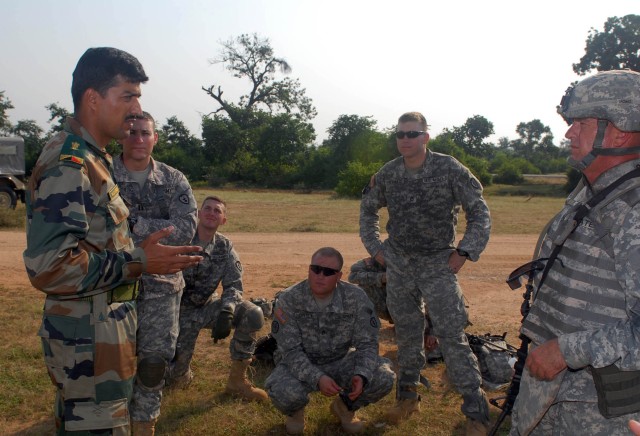
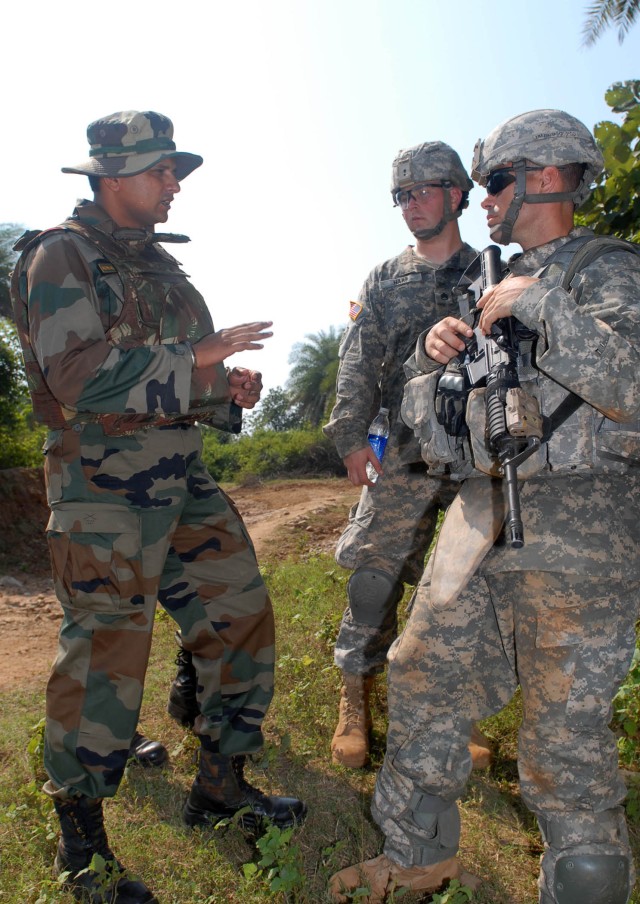
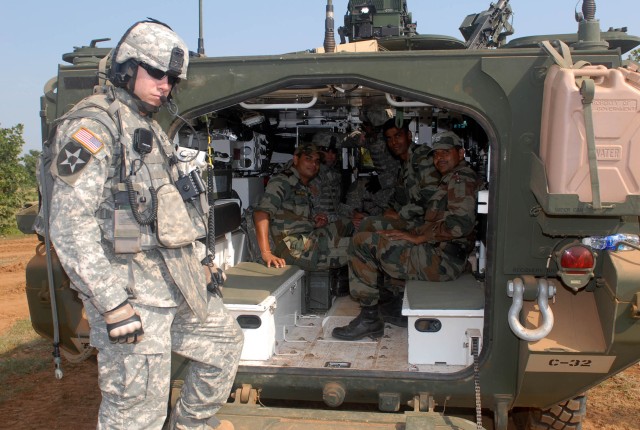
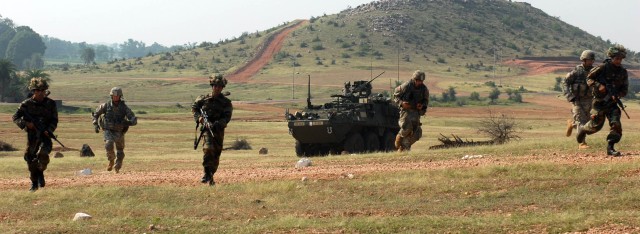
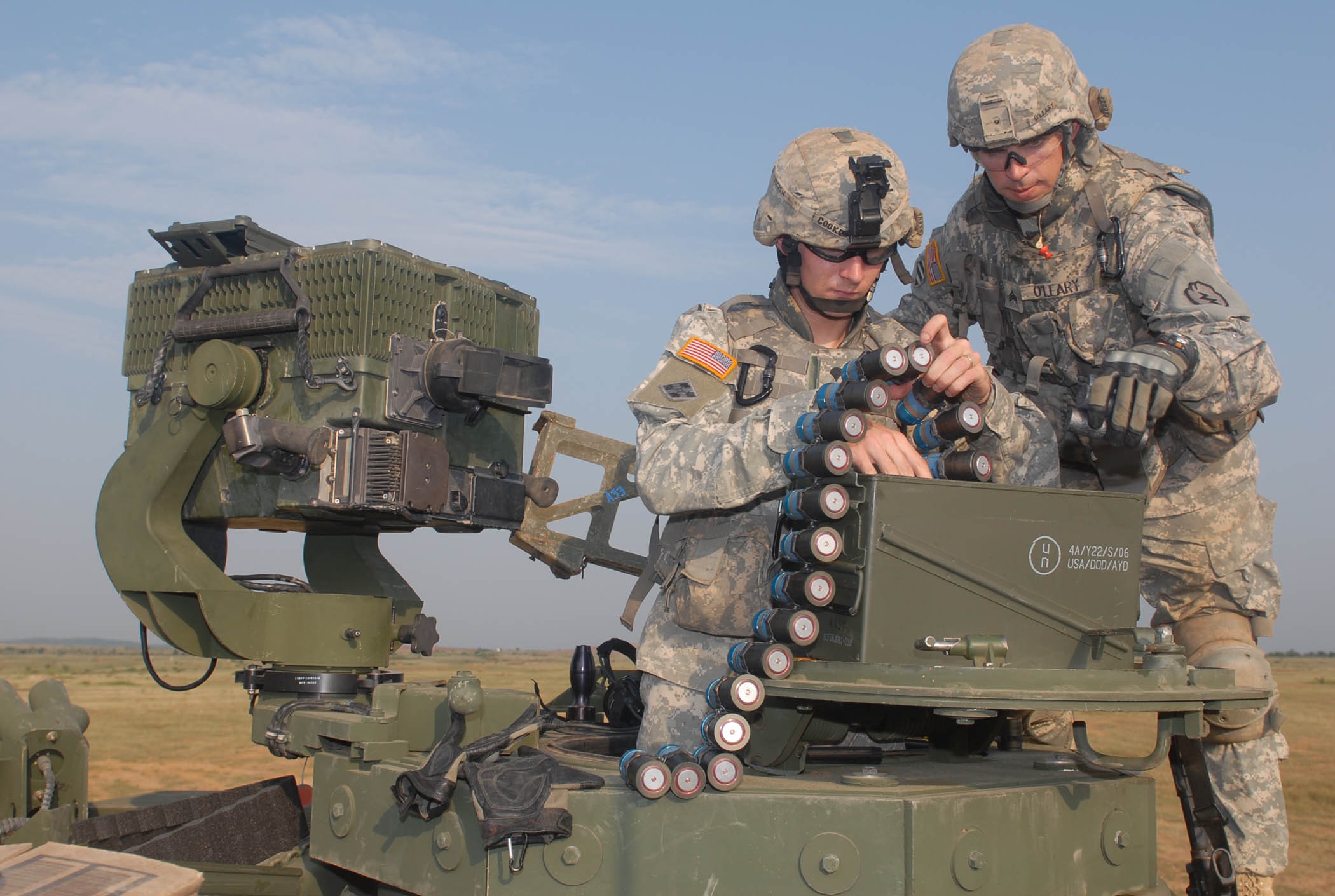



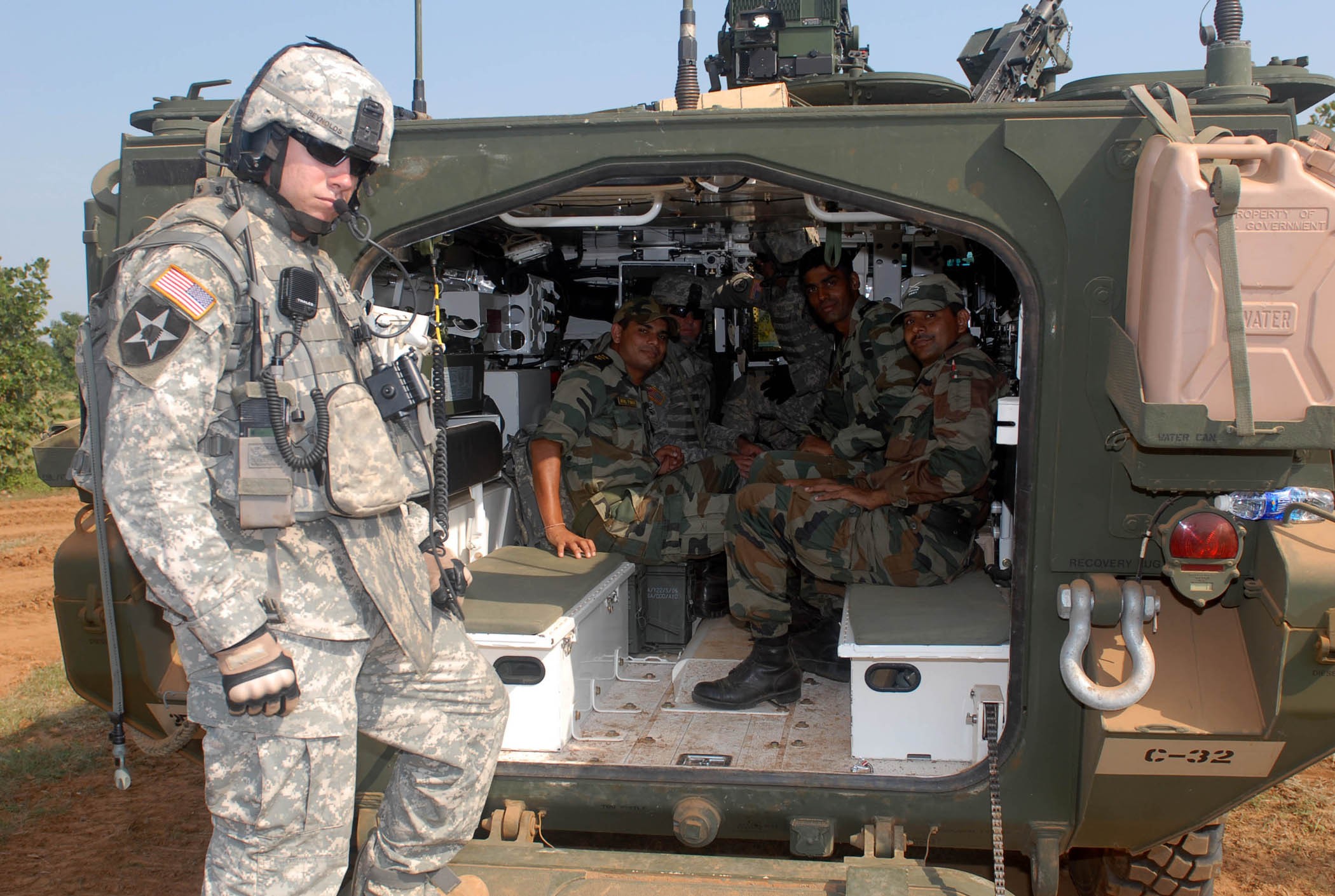

Social Sharing